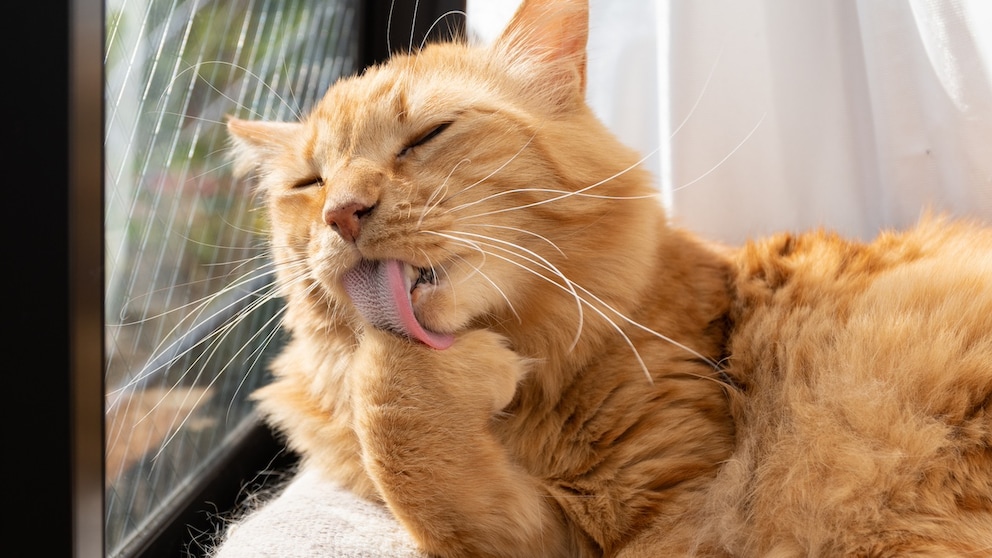February 26, 2025, 10:20 am | Read time: 2 minutes
Cats are known for their meticulous grooming. As they groom themselves, they inevitably swallow hair, which can accumulate in the stomach. Many cat owners are, therefore, familiar with the typical retching that often follows with the vomiting of hairballs. But what does it mean if your cat doesn’t produce any hairballs at all? Is this a cause for concern or a sign that everything is fine?
Cats spend a lot of time grooming their fur every day. In doing so, they run their rough tongue over their fur, which inevitably causes them to swallow hair, and this enters their metabolism. Normally, they excrete the swallowed hair via their intestines. However, hair often accumulates in the stomach, and hairballs are formed, which are medically known as “trichobezoars.” These are then often vomited up. Long-haired cats, in particular, such as Maine Coons or Norwegian Forest Cats, are more frequently affected.
No Hairballs — a Reason to Be Happy?
If your cat does not produce hairballs, this can be a positive sign. Most swallowed hair is then excreted in the intestines with the feces without any problems. As long as your cat appears healthy, has a good appetite, and defecates regularly, there is no cause for concern. It is not unusual for short-haired cats, in particular, to vomit hairballs only rarely or not at all. This is also the case with my cat Archie. He often smacks his fur loudly every day, but I have never seen him vomit hairballs.
When Could It Become Problematic?
The absence of hairballs can be problematic if your cat shows symptoms such as loss of appetite, constipation or diarrhea, vomiting without hairballs, and/or sluggishness and discomfort.
These signs could indicate that hair has become stuck in the stomach or intestines and cannot be excreted. In severe cases, this can lead to an intestinal obstruction, which can be life-threatening. In this case, surgical removal of the hairball is the only solution. So, if your cat exhibits such unusual behavior, you should consult a vet.

Christmas Decoration Tinsel Garlands Can Be Dangerous for Cats

Tulips, Daffodils, and Co. Which Early Bloomers Are Poisonous to Cats and Dogs?

Behavior explained Why do cats lick us? 6 possible reasons
Conclusion
If your cat is not producing hairballs, this is not a cause for concern in most cases but rather a good sign of a functioning digestive system. However, pay attention to how your cat behaves overall. If unusual symptoms occur, this could indicate a problem that should be checked out by a vet.
With a little attention and the right preventative measures, you can ensure that your cat leads a happy and healthy life — with or without hairballs.

